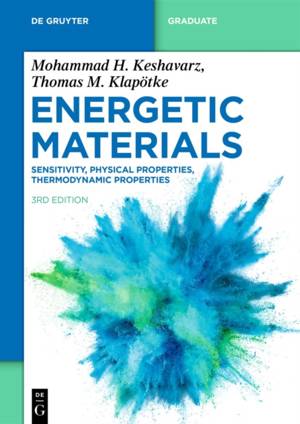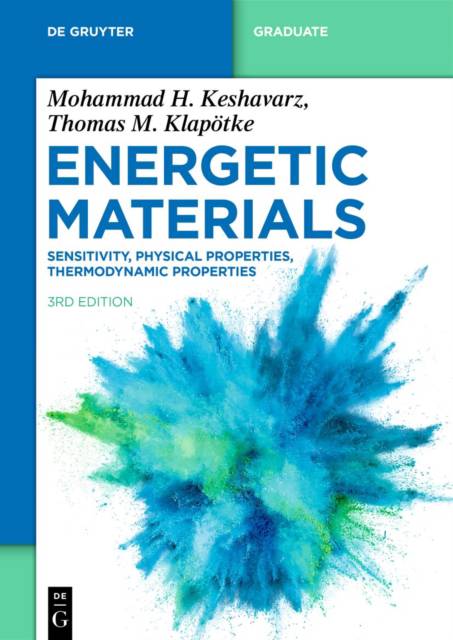
- Afhalen na 1 uur in een winkel met voorraad
- Gratis thuislevering in België vanaf € 30
- Ruim aanbod met 7 miljoen producten
- Afhalen na 1 uur in een winkel met voorraad
- Gratis thuislevering in België vanaf € 30
- Ruim aanbod met 7 miljoen producten
Energetic Materials
Sensitivity, Physical Properties, Thermodynamic Properties
Mohammad Hossein Keshavarz, Thomas M KlapötkeOmschrijving
This publication addresses the critical need for chemists engaged in the synthesis of new energetic compounds to comprehensively evaluate physical and thermodynamic properties, as well as sensitivity to various stimuli. The book delves into established and emerging methods for predicting key properties such as crystal density, heat of formation, and melting points, providing a thorough understanding of the subject matter.
In this revised edition, we present updated insights across all chapters, exploring topics like enthalpy and entropy of fusion, heat of sublimation, and correlations among different types of sensitivities. Additionally, three new chapters focus on the assessment of energetic metal-organic complexes, including energetic metal-organic frameworks (MOFs) and energetic polymers, alongside strategies for predicting properties of novel energetic compounds.
This book is an essential resource for researchers and practitioners in the field, offering practical techniques and a solid foundation for advancing the synthesis and application of energetic materials. Its relevance extends to both academic and industrial settings, making it a vital addition to the literature on energetic compounds.
- This book uniquely integrates theoretical methods with practical applications for predicting properties of energetic compounds.
- It addresses the gap in understanding the sensitivity and stability of new materials.
- Key features include updated methodologies, new chapters on metal-organic complexes, and comprehensive coverage of critical properties.
Specificaties
Betrokkenen
- Auteur(s):
- Uitgeverij:
Inhoud
- Aantal bladzijden:
- 520
- Taal:
- Engels
- Reeks:
Eigenschappen
- Productcode (EAN):
- 9783119147033
- Verschijningsdatum:
- 20/10/2025
- Uitvoering:
- Paperback
- Formaat:
- Trade paperback (VS)
- Afmetingen:
- 170 mm x 244 mm
- Gewicht:
- 675 g

Alleen bij Standaard Boekhandel
Beoordelingen
We publiceren alleen reviews die voldoen aan de voorwaarden voor reviews. Bekijk onze voorwaarden voor reviews.








